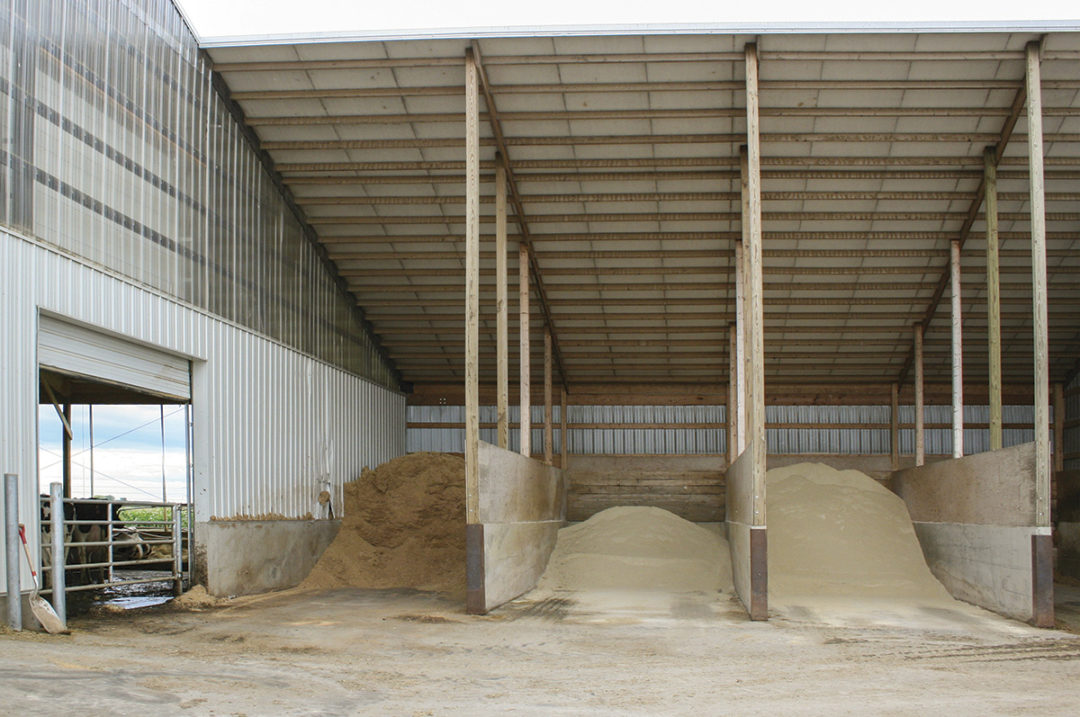Feed costs represent 40% to 60% of the total cost of producing milk on dairy farms in the U.S. and are most dairies’ number one expense. The prices producers pay for purchased forages, commodities and ingredients greatly impact feed costs and the farm’s potential profitability. Whether a farm is purchasing these ingredients or raising them themselves, these products are far too expensive to allow any to go to waste.
Minimizing feed shrink is an area of significant economic opportunity on most dairies, but you can’t monitor what you don’t measure. Feed shrink comes in many forms, including via field loss, storage, scale inaccuracies, heating, wind, rain, rodents, birds, mixing error, feed spills and feed refusals. Most dairies that do not have strict protocols for reduced feed shrink in place experience feed shrink of more than 8%, although the precise amount of feed shrink on a farm is a very difficult number to measure due to day-to-day variations in the weather, personnel and operating facilities.
From a feed ingredient perspective, wet byproducts such as distillers grains and gluten have a high shrink potential, with expected shrink between 12% and 40%. Wet forages such as corn silage and haylage have an elevated shrink potential of 5% to 17%. Dry meals, in most scenarios, exhibit a shrink of 2% to 10% on-farm, and that number is largely dependent on the storage type and environment. Commodity delivery methods, storage structure and wind speed also play a role in the amount of shrink you may experience. Depending on the farm protocols in place, common feed shrink percentages generally fall between 6.5% and 8.5% across all ingredients (Table 1).

Harvest and fermentation
Harvest losses can occur in the field due to wind, improper equipment maintenance or operator error. Estimates of field losses have not been extensively researched, but a loss of 5% can easily occur. Other losses can be related to the quality of the forages being harvested. If forages are not harvested at the proper moisture level, we will experience packing difficulty, and the fermentation quality may also be affected. Packing losses occur when we do not achieve proper densities in our silages when the necessary packing time and weight on the pile are not achieved. Insufficient packing allows more oxygen to remain in the pile, which results in poor fermentation and nutrient losses due to increased heating. Using a research-backed silage inoculant or preservative can lead to a reduction in nutrient shrink due to faster fermentations, promoting a quicker drop in forage pH, and also helps to ensure consistent forage quality. Covering losses in silages are observed when the pile is not appropriately covered and can lead to additional oxygen and rain intrusion, which can negatively affect quality and lead to increased spoilage.
Storage and feedout
The storage and feedout of ingredients can account for a large percentage of on-farm feed shrink. When evaluating shrink on high-cost mineral and protein mixes, bins generally have smaller storage losses (e.g., typically around 4%) compared to three-sided commodity sheds (e.g., 5% to 15%, depending on the commodity). On large farms where commodity sheds are necessary, these sheds should be carefully designed, with protection from the wind and the elements in mind. Situate the shed in an area that slopes correctly to ensure moisture does not travel back into the bays. Whenever possible, prevent wind erosion by strategically mixing inside or out of the wind. When feed mixing is not taking place, stacking bales in front of the bay or installing roll-down curtains to minimize wind losses can also help. Properly face forage piles with a rake or facer to maintain silage quality while only removing enough material from the face for that specific feeding, as excess feed in a ground pile can lead to large increases in shrink due to the weather, heating and spoilage. Plastic removal from the top of the forage pile should take place twice per week, at a minimum, to ensure that large amounts of feed are not exposed to excessive weather or the elements prior to feeding. When possible, weigh all feed as it enters the farm to ensure your inventories are accurate; this will allow any losses to be calculated more easily at feedout by using on-farm feed inventory software.
Weather and wildlife
Wind can be a substantial source of shrink with concentrates in any outdoor system. Winds blowing at 10 miles per hour (versus 5 mph) can increase feed shrink by 8% – and at 15 mph, those losses increase to 27%. Some ways to help minimize these potential wind losses include decreasing the distance from the commodity shed to the mixer wagon and providing a wind break at the loading pad. Adding drop tubes to get the feed down into the mixer or having bins set up to load the mixer through a central building that blocks the wind can significantly minimize wind- and weather-related losses. Additionally, keeping any feed in storage where rain can enter could lead to increased shrink due to spoilage or rot and can also lead to increased variations when mixing the final ration. In addition to these factors, producers should also manage losses due to flies, birds (who eat up to 50% of their bodyweight per day) and rodents, who can consume large amounts of feed over time and can lead to increases in feed spoilage and deterioration as a result.
On-farm error
One of the most expensive times for feed loss to occur is during mixing. Using tracking software for feed ingredients can be an excellent way for dairies to not only measure their on-farm inventories but also to help improve the accuracy and efficiency of their feeders. Scales should routinely be examined and calibrated with the recommended preventative maintenance, as scale inaccuracies can also lead to drastic amounts of feed shrink. The dry matter of all ingredients included in the diet in amounts of 5 pounds or more should be measured routinely to ensure the feed being delivered to the cow is as close to the formulated ration as possible. Conducting dry matter on wet forages is common, but even dry ingredients like soybean meal can vary in their dry matter percentage by 2% to 3% between loads, which can lead to significant amounts of shrink over time.
The economics of shrink
The estimated financial losses due to shrink can be astounding. With the average cost of a ration nearing $8 per cow per day in high-producing cows, an estimated shrink of 8% would equate to a daily loss of 64 cents per cow per day. On a 1,000-cow dairy, this adds up to $640 per day – or $233,600 annually. If you figure ration shrink into your daily feed costs, these costs would actually be closer to $8.64 per cow per day. A goal of reducing feed shrink to 4% per day can help to decrease your true (i.e., shrink-corrected) feed costs by 32 cents per cow per day, leading to improved farm profitability in a relatively short period of time.
Shrink is inevitable on any farm. Taking a hard look at all of the areas where shrink can occur is necessary for minimizing it – but that may not be obvious until you actually take a look. Working with your team to come up with ideas for decreasing shrink can set your operation up to achieve a goal of 4% to 5% shrink or less.










